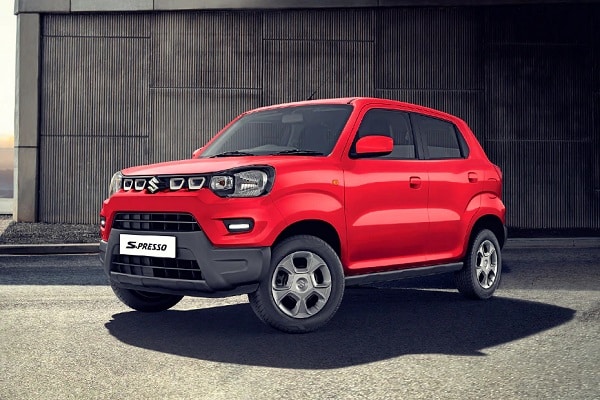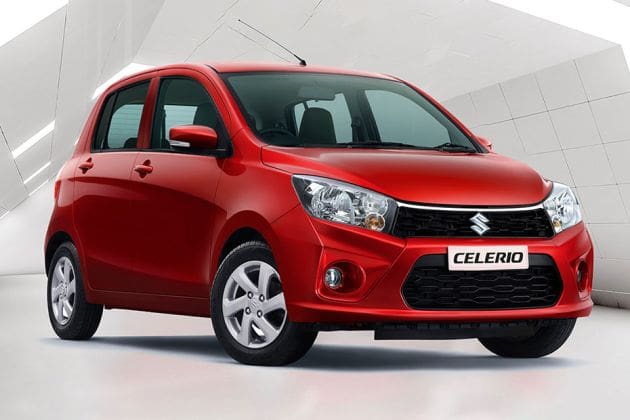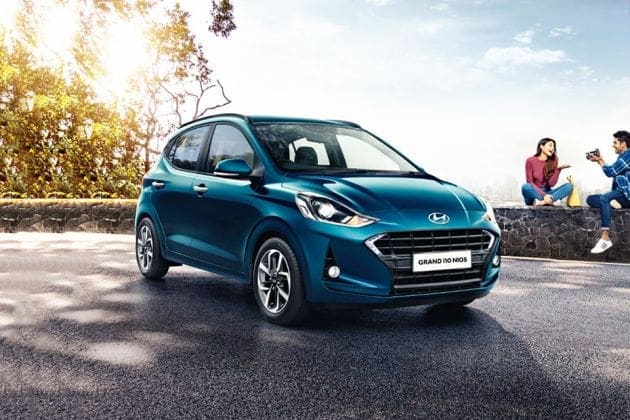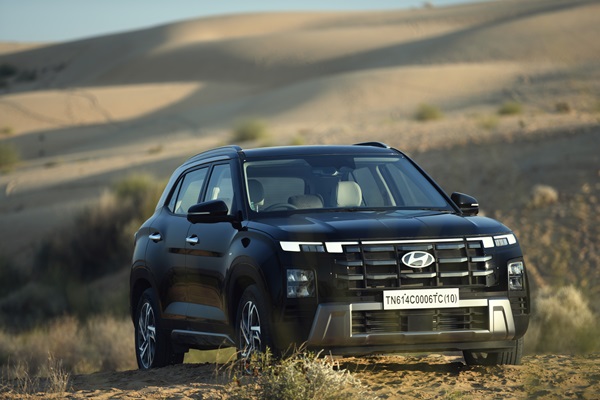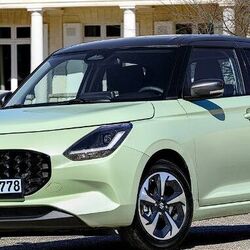What's denting big on small car sales in the Indian market?


The Indian passenger vehicle market may be one of the biggest automobile marketplaces in the world, but it has traditionally been driven by small cars. The small, practical and affordable hatchbacks have always been the driving force behind the growth of the country's car market. However, over the last few years, small cars have been witnessing a slump in sales, which has become more prominent in the last quarter.
Data released by the Society of Indian Automobile Manufacturers (SIAM) has revealed that sales of entry-level cars slumped by 75 per cent to 35,000 units in the last three months. This is not the case for other segments. For example, sales of utility vehicles including SUVs, crossovers and MPVs have grown by 23 per cent to 639,552 units between July and September 2023. In fact, SIAM data has revealed that SUVs are contributing nearly 60 per cent of the Indian passenger vehicle sales, while the market share for the hatchbacks is shrinking fast.
Also check these Cars
Watch: Maruti Alto K10 2022: First Drive Review
What's driving down small car sales?
These numbers make it evident that while the small car market in India has been shrinking, demands for bigger and pricier SUVs have been rising among India's aspirational consumers. Also, while the small cars that were the erstwhile driving force of the Indian passenger car market for decades have witnessed a slump in sales, the retail number of overall passenger vehicles in the second quarter of the current financial year has grown by 4.7 per cent. In fact, SIAM has claimed that sales of passenger vehicles in the last three months were the highest ever in any second quarter.
Avik Chattopadhyay, former head of marketing, product planning and PR at Volkswagen India, believes that small cars are the foundation for any economy as they form the base on which the entire four-wheeler market rests.
This brings the question of why the sales of small cars are declining. There are multiple factors that play key roles in this slump story.
Watch: Maruti Celerio: First Drive Review
Weakest monsoon in five years
One of the immediate and obvious factors in the last three month's sales slump for small cars was the country's weakest monsoon in five years. Rural markets contribute a large chunk to the sales of small cars. The weak monsoon resulted in dampened consumer sentiment in the rural markets across India, as income levels for rural consumers are lower than before. This financial stress has certainly put pressure on the hatchbacks' sales.
Small cars, bigger costs
Prices of entry-level cars have increased over the last few years because of factors like regulatory changes, rising production costs driven by higher raw material costs etc. This has lowered the gap in the price of small cars and SUVs. Consumers who are opting to buy cars are thriving to buy utility vehicles as they offer better comfort, and better safety compared to the small hatchbacks.
Avik Chattopadhyay believes that the Indian automobile industry, in its greed for profitability, is vacating the small car segment and getting into only making products priced beyond ₹5 lakhs. “The ones below this price point are the most unattractive like the Alto. The industry, taking the excuse of RM costs, chips and stringent regulations on safety and emissions, has increased prices and forced the customer with virtually no choice," he added.
Watch: First Drive Review: Hyundai Grand i10 Nios Turbo
Low profitability means a lack of OEM enthusiasm
Entry-level is a low-margin and high-volume segment in the Indian car market. With the production cost of small cars going up substantially over the last few years, automakers too are showing less enthusiasm. Instead, they are showing more interest in making and selling SUVs, crossovers and MPVs, as these offer higher profitability to the OEMs. Investment in the small car segment from OEMs is diminishing gradually. Honda, Nissan and Toyota have stopped investing in small cars in India.
In the last several months, there have been multiple launches in the utility vehicle segment from major manufacturers. While Maruti Suzuki launched Jimny and Fronx, Hyundai and Honda launched Exter and Elevate, respectively. Tata Motors launched a series of updated versions of its SUVs, including the Nexon, Harrier and Safari. On the other hand, the hatchback segment has not seen the launch of a single new model. Instead, India's largest car manufacturer Maruti Suzuki discontinued the Alto 800, which remained a stellar performer in terms of sales for a long time. The non-availability of new models in the small car segment is a major reason behind the slumping sales.
Speaking on this, Puneet Gupta, Director of S&P Global Mobility, said that India which was known for small cars two decades back is not true any more. Today more than 40 per cent market is just SUVs. “Shrinking mini car segment is due to rising aspirations, a flood of regulations which have forced OEM to increase prices. Also, not many new launches in the segment are making consumers move away from the traditional bread-and-butter segment. OEMs have even been exiting this segment like Hyundai exited Santro, and Nissan exited Redigo due to less profitability in this segment," Gupta added.
Also Read : Should you buy a special edition car this festive season?
Evolving consumer aspirations
In India, which is still a largely cost-sensitive market, buying a large-ticket product like a car is still considered an achievement. With the young generation of consumers being exposed to global trends more openly due to globalisation, and them being aspirational about their product purchases, demands for SUVs are rising. While SUVs or MPVs offer generous space, higher performance, and loads of advanced technology-driven features, hatchbacks lack those.
The small cars are rather seen as a mere medium of commuting from point A to point B. However, the aspirations of the Indian consumers have changed. They don't seek just a car that is merely a mode of personal transport. Cars in the modern world have become an integral part of a better lifestyle and in this space, hatchbacks are failing to fit in, which is why the consumers are shying away from buying small cars.
Anuraag Bharadwaj, Vice President and Industry Platform Leader for Automotive India at Capgemini, believes that this slump in sales for entry-level cars is not about moving away from small cars but moving up the market ladder. “The Indian market has changed significantly, per capita income has gone up, and things that were optional and considered a luxury earlier are now necessities. The market has evolved, customers have the experience of bigger, better, more well-appointed cars, and they have aspirations with increased disposable income and easy finance options. All these put together are the reasons why we are moving up the market ladder, not moving away from small cars," he added.
What lies ahead?
To sum up, the shift in consumer preference is crystal clear. Majority of the car buyers want a shiny new SUV rather than a small and compact hatchback. As Kavan Mukhtyar, Partner & Leader Automotive at PwC India has narrated, Indian customers have a preference for compact SUVs due to their versatility and suitability for Indian road conditions. “Also as income levels are going up and easier availability of finance customers are switching to SUVs rather than small cars," he added.
However, for many consumers graduating from two-wheelers to four-wheelers, small cars are still the first choice. The case is the same for many first-time car buyers as well. As industry experts believe, if India is to become truly democratised in personal four-wheeler mobility, then the entry-level car segment has to revive. Otherwise, the market will be only for upper-middle-class consumers, market penetration will remain low and India will stagnate as a market at around 40 lakh new four-wheelers every year.







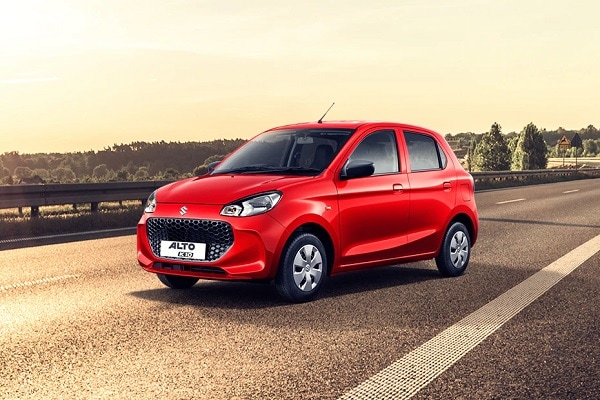
 998.0 cc
998.0 cc Multiple
Multiple
